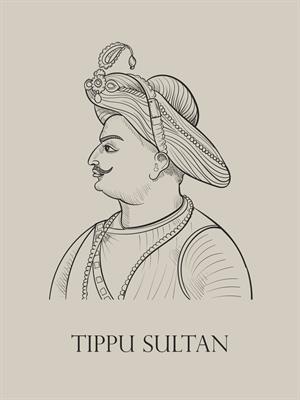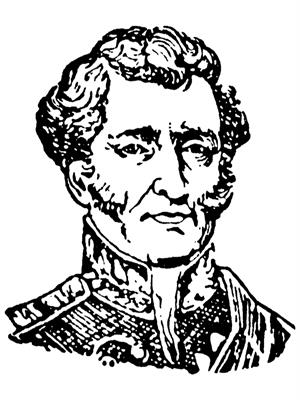
PUMPA - SMART LEARNING
எங்கள் ஆசிரியர்களுடன் 1-ஆன்-1 ஆலோசனை நேரத்தைப் பெறுங்கள். டாப்பர் ஆவதற்கு நாங்கள் பயிற்சி அளிப்போம்
Book Free DemoThe British attention on Mysore
- Mysore was ruled by the Hindu kingdom Wodeyars, where Haider Ali was the soldier in the Wodeyar army who later became the ruler of Mysore in \(1761\ \)with his courage and astute administrative skills.
- The traits with which he ruled bothered the British as Haider had close ties with the French powers of the region.
- Another reason that angered the British was Haider's control over the rich Malabar coasts, which interrupted the BEIC’s commercial interests.
The Anglo – Mysore war – 1: (1767 – 1769)

- The Hyderabad Nisam planned to attack Haider Ali in \(1767\ \)with the help of British general Joseph Smith; on the other side, Haider went on to attack the British bastion in Mangalore and bashed them.
- Haider bought in a new strategy by which he suddenly began to attack Madras (controlled by British) when they were not ready for it. This forced the British to come down to a negotiation table with Haider.
The Madras Treaty
- Exchange of prisoners and conquered areas between them.
- The British promised to help Haider Ali in case of attacks from other forces.
The British Betrayal
- To save their face from Haider Ali, the British accepted the Madras treaty, but later they slowly started to treat the provisions with utter disregard. As per the provisions, the British did not protect Haider from the attack of Marathas\(1771\) , where Haider lost control over most of his territories.
- Haider Ali preferred the help of the French army, who had advanced arms and ammunition and, most importantly, were ready to support Haider against the British. Haider's turn towards the French irked the British, which provoked them to attack Mahe, a French bastion on the Malabar coast.
The Anglo – Mysore war – 2: (1780 – 1784)

- Haider Ali started his attack in \(1781\ \)against the British by taking on Carnatic and defeating the English army headed by Colonel Baillie.
- The BEIC brought Sir Eyer Coote to take on Haider, which he did successfully by detaching the forces of Nisam and Marathas, making Haider’s army weak.
- Coote defeated Haider in Porto Novo (Today’s Parangipettai in Tamilnadu). Haider later died of Cancer in \(1782\).
- Post the demise of Haider, Tipu Sultan, his son, took his reign and continued the battle, which went worthless at the end. As both sides depleted with no sight of the result, they called a truce.
Treaty of Mangalore (1784):
The Rise of Tipu Sultan
- Tipu Sultan proved his mettle in the fight against the British in the Second Anglo Mysore war, where he was holding an end despite the advances and attacks of the English.
TIPU SULTAN: The son of Haider Ali was known for his brave character, which earned him the name “Tiger of Mysore”. He is also known for his fluency in various languages like Urdu, Arabic and Persian.
- He went on to design his army similar on the lines of the French model with the command in the Persian language.
- To consolidate the empire of Deccan, he was ready to take the British forces as the previous treaty does not make any difference. He planned to attack the allies of British forces, and he attacked Travancore in \(1789\).

Tipu Sultan
TRAVANCORE: This place was the only source of pepper export for the BEIC, from where it was exported to various European countries.
The Anglo – Mysore war – 3: (1790 – 1792)

- The Jealousy caused by the prominence of Tipu Sultan made the Nisam and Marathas take a side with the BEIC.
- General Meadows, who tried to attack and capture, failed in his attempt as he was defeated in 1790, which allowed the British to bring Lord Cornwallis into the picture,
- Under Cornwallis, the English army marched towards Ambur, Vellore, and Bangalore to capture the Srirangapattinam fort in \(1791\).
- Tipu fought till the last of his ability and offered a truce when his powers flattened. Cornwallis accepted it, which officially ended the war.
Treaty of Srirangapatinam: (1792)
- Surrendered half of the Mysore Kingdom to the Allied forces.
- Tipu paid war indemnity of\(\ 3.60\ \)crores.
- Sent his two sons as Hostages to the British.
- The British took Malabar, Dindigul and Baramahal (today’s Salem – Coimbatore region), the Marathas took Tunghabadra area, and the Nisam took areas of Krishna River.
The Resurgence of Tipu Sultan: (1792 – 1799)
- The defeat in the hands of the British and the treaty haunted Tipu from all ends, complying with the treaty he got his sons released from the custody of the English.
- Tipu asked for the help of other European powers like Arabia, Versailles, Afghan and France (which was under Napoleon at that time).
- The British power forced Tipu to enter into the Subsidiary alliance, which angered Tipu, and led him to the war.
The Anglo – Mysore war – 4: (1799)
- The war took place for a very short period of time where Tipu faced multiple and successive defeats in the hands of General Stuart and then by Harris.

Lord Wellesley
- When Arthur Wellesley joined forces with his brother Wellesley, the end came at no time for Tipu Sultan and his forces, where he was forced to retreat from the battle.
- The entire kingdom of Mysore fell under the knees of the British forces, which eliminated the threat of French revival in the near future.
Mysore – Post the Anglo Mysore war:
- Tipu Sultan’s family was sent to the fort of Vellore.
- The Nisam took over Guramkonda and Gooty districts.
- The British took over Coimbatore, Wayanad, Srirangapatinam and Dharapuram.
- Krishna Raja III of the Wodeyar family was given the throne.